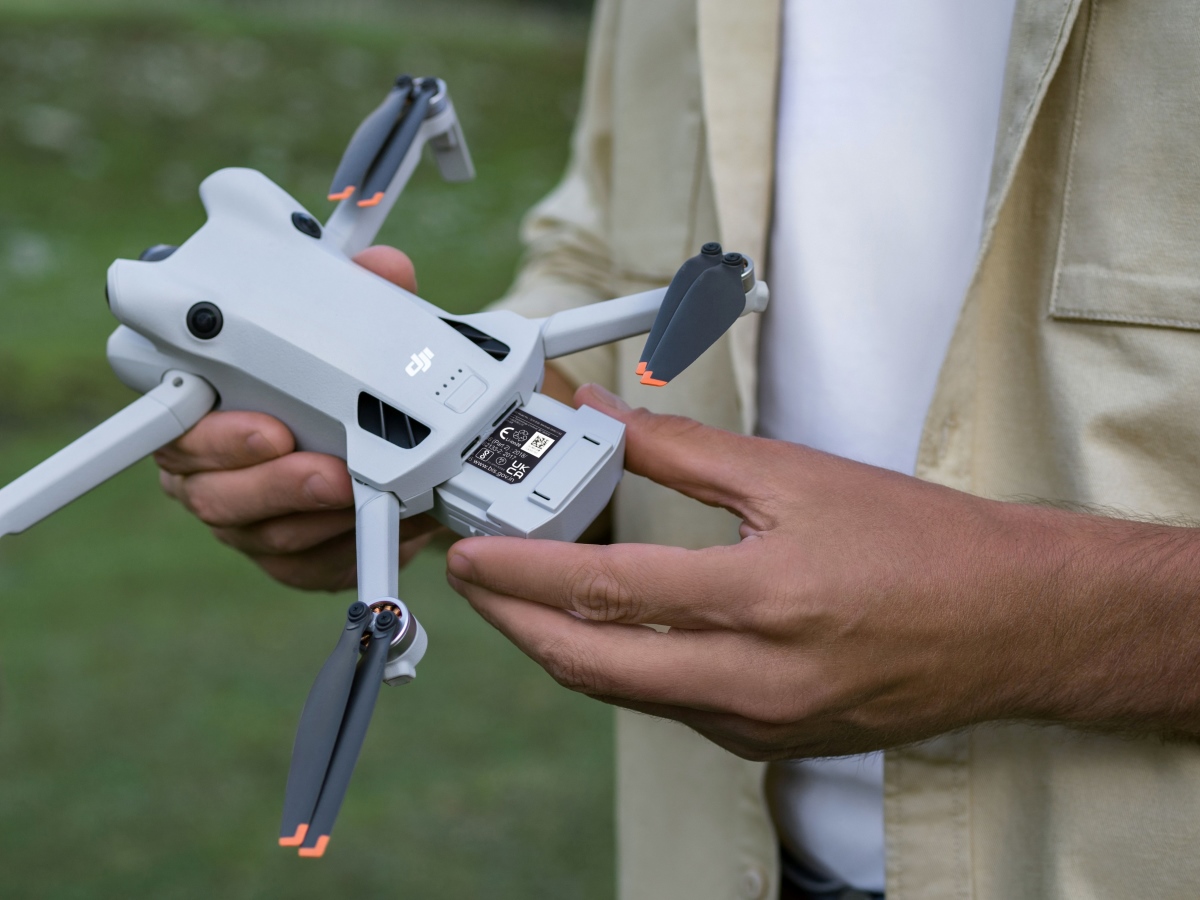
Are you planning to fly your DJI drone this winter? Then you should know common drone issues caused by low temperatures, as well as safety and camera settings tips to follow before, during, and after the flight to keep your aircraft in the best shape.
Battery and environment
DJI drones are powered by lithium batteries. Cold temperatures can put these batteries out of their comfort zone by decreasing their discharge capacity and boosting voltage drop during discharge. If the battery voltage drops significantly during flight, the aircraft may not be able to maintain its speed at maximum thrust. And continuing to fly with a low battery will increase the risk of accidental power failure. Follow the tips below to prepare for a safe flight:
- Ensure that your batteries have been fully charged before takeoff.
- Use a battery preheater or power on the battery in advance to preheat it to over 15°C (59°F), thus reducing the internal resistance of the battery.
- After powering on your drone, hover and allow the aircraft to warm up for about a minute before takeoff. This will also help to ensure the normal performance of various sensors and dissipate any water vapor on the lens.
- Make sure that you push the control sticks gently to prevent any battery voltage drops.
- Batteries drain faster in cold temperatures, so keep an eye on your drone’s battery status during flight.
Similarly, don’t forget to keep your mobile device warm. At the same time, you should watch out for frostbite. Operating a remote controller with numb hands is dangerous; wear gloves when flying outdoors during winter months. You can also wear goggles to prevent eye damage caused by light reflection.
Another thing to look out for at this time is reduced visibility and the moisture of snow. Always check the weather conditions and avoid strong wind, rain, and snow. DJI does not recommend flying in temperatures below 14°F (-10°C) for most drones. Additionally, to prevent visual sensors from malfunctioning, avoid flying at low altitudes (within 5m) above thick or highly reflective snow.
Remember that moisture can also damage the motors. So, avoid contact with snow and instead use a landing pad for taking off and landing your drone. Finally, before you take off, ensure that the GPS signal is strong.
Also read: 5 products DJI will stop supporting in 2024
Drone camera settings for winter weather
To capture the beauty of snow in all its glory, you may need to manually set camera exposure. This is because the camera’s exposure system can sometimes underexpose snow, tricked by its brightness. If it’s a bright sunny day, increase exposure by two stops. On overcast days, a raise of one-stop should be enough. You can also leverage the Auto Exposure Bracketing (AEB) function on your drone to take multiple shots of the same image with different exposure settings. Similarly, you may need to adjust the white balance to get the right color balance for your snowy landscape.
Storing your drone in winter
After flying in winter weather, promptly wipe the aircraft clean to keep it dry. The temperature difference when entering a warm room from a cold outdoor environment can cause condensation to form on aircraft surfaces, such as the battery and lens surfaces. A quick wipe can go a long way to prevent damage to electronic components.
But do keep in mind that your drone’s performance might also be affected if it’s kept idle for a long time. Storing the aircraft properly becomes key in this case. Make sure to:
- Fully charge and discharge the battery once every three months to maintain battery health.
- Remove the propellers and attach the gimbal clamp when storing your drone.
- Store your drone in a dry, indoor environment at a constant temperature between 41-68°F (5-20℃). Avoid storing the aircraft in direct sunlight.
Here’s hoping these tips will help you capture spectacular winter scenery with your drone. Happy flying!
Read more: Everything new coming to DroneDeploy this month: Flythrough mode, 3D map view cube
FTC: We use income earning auto affiliate links. More.





Comments